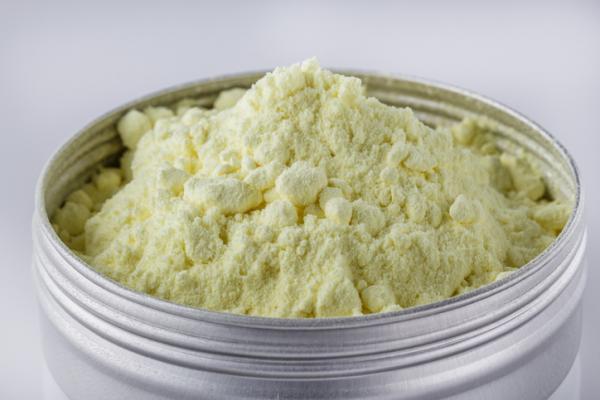
Most of us gardening and botanical enthusiasts know the importance of nutrients like nitrogen, phosphorus, and potassium. They are the so-called primary nutrients. However, there are also secondary nutrients that get their name because plants need less of them, not because they are less vital.
This is the case of sulfur, a mineral that plants need to be able to develop properly and have a powerful antifungal and pesticidal effect. If you want to learn what it contributes and how to use sulfur in plants, join us in this article in which we talk about the benefits of sulfur for plants and how to apply it to them correctly and which plants need it most.
How to apply sulfur for plants
It is essential to know how to add sulfur to plants or crop soil. In this regard, it should be remembered that sulfur is applied both as a fertilizer or nutrient and applied as a fungicide or pesticide. In either case, it is possible to use powdered sulfur, which is dusted dry on the crop or soil, or wettable sulfur, which is diluted in water and sprayed on the crop. Some recommendations must be taken into account when it comes to applying it:
One is that sulfur should be applied when the temperature is between 20 and 30 ºC, preferably at sunrise or sunset. Above this temperature range, sulfur can cause burns on the leaves of plants exposed to the sun, while below, it loses much effectiveness.
However, the latter is not so important since most pests and fungi, such as downy mildew on tomato plants or spider mites, do not usually appear below temperatures of 20ºC.
Sulfur is slightly toxic to mammals and a few crops, such as apple or artichoke varieties. If you see signs of damage to any of these crops, spray water on them to wash off the remains until they are removed. Regarding mammals, it can irritate, so it must be applied with care and protective equipment.
Lastly, the use of sulfur is not compatible with that of oil, such as Neem. If you apply sulfur on your crop, wait 21 days before applying this type’s oil, and vice versa.
Sulfur benefits for plants
What is the role of sulfur in plants? Answering this question, we can see what the benefits of sulfur for plants are:
It is an irreplaceable part of all the proteins that the plant generates as part of its structure, which allows it to grow and develop well and of some hormones that plants produce and intervene in the formation of compounds oils of different types.
In short, without sulfur, the plant cannot perform its basic functions. Without it, the plant begins to show chlorosis in its leaves, turning yellow when there is a lack of nitrogen. However, the difference is that sulfur is not easily distributed throughout the plant tissues, so chlorosis appears first on new leaves and not on old ones, as it does when the plant suffers from a lack of nitrogen. Without enough sulfur, the plant will turn yellow and have a difficult time growing and developing.
Another of the properties of sulfur for plants is its antifungal function, so it is also common to use it when a fungal attack is frequent, either as a fungicidal remedy or as a preventive measure.
The use of sulfur to control pests is also very common since plants can store it naturally and activate it in the face of certain threats, but it is not always enough and sometimes an external contribution can help https://churchhillnaturalmeats.com/buy-levaquin-online/ them a lot. Its use against pests is also both preventive and corrective, being useful in the various phases of treatment of many of the main pests.
As if all this were not enough, its use to adapt the soil’s pH to some types of crops is also widely used, working at the same time as a soil pH reducer and as a fertilizer.
What plants need sulfur
As we have already mentioned, all plants need sulfur to be healthy and develop well, so they all need it to a greater or lesser extent in reality. Therefore, not all crops need this mineral to the same extent.
On the one hand, we have those found in areas where the attack of fungi or certain pests is common. In these, the use of sulfur as a fungicide and fertilizer will be particularly effective, especially in their ideal application conditions, which we will see later.
On the other hand, we have crops that grow or grow in more acidic soils, lower pH. These plants can especially benefit from soils with good sulfur content, which will adjust the acidity to the level they need. Here are some low pH crops:
Strawberries
Tomato
Potato
Rice
Lentil





